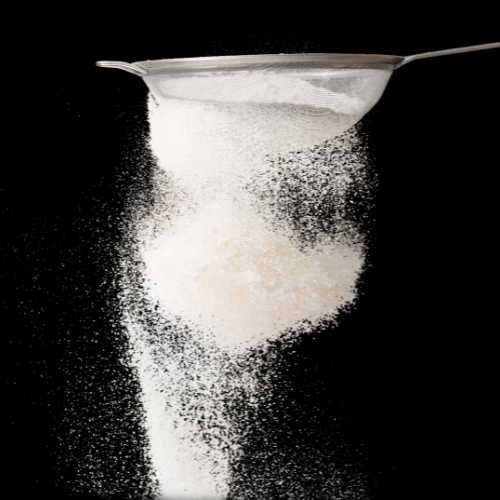Eat more fibre. We’ve all heard this before, but there’s a significant fibre deficit in European diets. So why does the problem still exist, and what are we doing about it?
At Tastes of Better, you’re invited to be part of a live audience with scientist and food journalist Stefan Gates, who will be talking to the experts responsible for exploring the future of food and beverage, and putting Tate & Lyle at the forefront of solutions to elevate product innovation with fibre across categories.
In this first episode: Closing the Fibre Gap, we will explore how Tate & Lyle is moving the conversation on from fibres formulated for sugar reduction to the importance of fibres for nutrition density, adding value to products to drive consumer appeal.
So, with this in mind, here’s a small taster of what will be discussed on Tate & Lyle’s inagural talkshow.
Health benefits
Tate & Lyle’s ingenious ingredient innovation means a product’s nutritional content can be rebalanced with adequate amounts of fibre, making food healthier beyond simply removing sugar.
There are evident health benefits to consumers through this approach, not least closing the fibre gap, which is the difference between actual fibre intake and daily intake recommendations. Current government guidelines recommend adults to eat at least 30g of fibre every day, but currently the average UK adult eats around 20g, and children’s diets are similarly lacking in fibre.
Tate & Lyle has published a comprehensive modelling study that shows increasing the fibre content of everyday foods in the UK would help 50% more adults to reach the recommended daily intake, whilst the study shows that among children, the percentage of children eating sufficient fibre would also almost double.

In terms of health improvements, fibre fortification could help 72% of adults reduce the risk of cardiovascular issues and type 2 diabetes.
These are all compelling reasons to eat more fibre, which for many years has largely been perceived by the public as something that improves bowel function and little else, other than having an unremarkable taste.
However, more recent years have seen ‘wellness’ become the most influential trend for consumers, according to a report by Globaldata, while a survey by McKinsey says Covid sparked a trend among consumers to look for significantly healthier diets.
Emerging research even suggests some fibres can help the immune system function properly, and with personal immunity high on the consumer agenda following the pandemic, it’s just another reason for brands to explore fortifying products with fibre and enable consumers to get closer to the wellness levels they desire.
Research by the Hartman Group conducted in 2018 suggests fibre is the number one nutrient consumers would like to eat more of, followed by Vitamin D, protein and whole grains.
Consumer appeal
Brands can make use of Tate & Lyle’s PROMITOR® Soluble Fibre in reformulations provide fortification benefits across categories, without impacting taste while being able to reach “a source of” or “high in fibres” claim. Chocolate milk beverages, for example, can have their nutritional value enhanced through the addition of fibres, maintaining familiar flavours and colours, with the benefit of reduced added sugar.

Yogurt is a category that is an interesting target for fibre fortification. Tate & Lyle research says at least 7 in 10 UK young adults would include fibre-fortified yoghurt in their daily diet, for health reasons, but also because it would be a convenient way to eat more fibre.
Yet, still a fibre gap remains – representing an opportunity for brands to fortify their products and make it very clear on-pack that they are doing so to capture those consumers actively seeking out these products. On-pack nutrition claims linked to fibre currently lag behind other nutrients, like vitamins and minerals, no added sugar, reduced fat and added protein. It’s a missed opportunity.
What does it take?
Globally, food and drink product launches that contain fibre are growing – Europe has seen a 5% growth rate, thanks to increased acitivity in the beverages, confectionary and desserts categories in particular. And purchase intent for products fortified with fibre in beverages rises by between 45% and 50%. It ranges from 50% to 61% in dairy, and from 49% to 67% in bakery. Tate & Lyle research states adding ‘Excellent Source of Fibre’ messaging would increase purchase intent by an average of 55%.
And Tate & Lyle is perfectly-placed to help manufacturers and brands take advantage of this latent intent.
Firstly, as a leader in global nutrition, it has a deep understanding of modern dietary challenges, and can provide bespoke solutions based on customer and consumer nutrition needs.
Secondly, it has an equally deep understanding of how different ingredients behave under specific processing and recipes to meet specific requirements and demands.
Thirdly, its nutrition experts understand the physiological and epidemiolocal requirements behind any formulation or reformulation, as well as what the consumer is looking for.
And lastly, Tate & Lyle understands the relationship between the ingredient, its properties, and its impact on sensory perception and consumer hedonics.
Science is the answer
When it comes to adding fibres, Tate & Lyle’s soluble fibre can replace sugar, or deliver fibre fortification to add nutritional benefits across many food and beverage applications.
It has excellent solubility and stability. It does not breakdown in high heat/ shear/ low-pH system, meaning there is no need to ‘overdose’ compared to soluble fibres such as inulin. Yet at the same time, digestive tolerance is excellent, with very high doses (up to 65g a day, when consumed in multiple portions throughout the day, and 40 g a day, when consumed as a bolus) tolerable for healthy adults.
In short, PromitorTM Soluble Fibre has good digestive tolerance, in addition to a clean taste, consumer-friendly labelling – and it’s easy to use, making it perfect for reducing sugar.
Ultimately, Tate & Lyle is on a mission to transform lives through the science of food, and one of the ways it’s achieving that is through fortification. And whether its soups, sauces, bakery, beverages, confectionary diary or baby food, Tate & Lyle has solutions to achieve just that.
What next?
The fibre gap needs closing for the benefit of everyone around the world, but to make it easier for brands, fibre is the ingredient du jour. Consumers are calling for it. And brands are missing out on sales by not adding it, and being able to shout about it.
All of this, and more, will be discussed by Tate & Lyle’s experts on the sofa with Stefan Gates at Tastes of Better in October, where audience members will be able to taste a range of fibre fortified products and gain insight into why this solution works.









